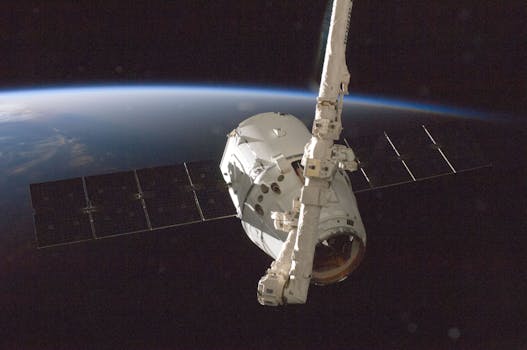MEO Satellites: A Comprehensive Overview of Medium Earth Orbit Satellites for WordPress

MEO Satellites: A Comprehensive Overview of Medium Earth Orbit Satellites
MEO satellites, or Medium Earth Orbit satellites, are a type of satellite that orbits the Earth at an altitude of approximately 2,000 to 36,000 kilometers. This range is between the Low Earth Orbit (LEO) and Geostationary Orbit (GEO), offering a unique set of advantages and applications. MEO satellites play a vital role in modern satellite communications, navigation, and remote sensing. In this article, we will delve into the world of MEO satellites, exploring their history, applications, advantages, and future prospects.
History of MEO Satellites
The concept of MEO satellites dates back to the 1960s, when the first satellite, Intelsat 1, was launched into a Medium Earth Orbit. However, it wasn’t until the 1990s that MEO satellites began to gain popularity, with the launch of the first Global Positioning System (GPS) satellites. Since then, MEO satellites have become an essential part of modern satellite communications, with numerous constellations and individual satellites launched into this orbit.
Applications of MEO Satellites
MEO satellites have a wide range of applications, including:
Navigation: MEO satellites are used in navigation systems such as GPS, GLONASS, and Galileo, providing location information and timing signals to receivers on the ground.
Communication: MEO satellites are used for satellite communications, providing broadband internet, voice, and data services to remote and underserved areas.
Remote Sensing: MEO satellites are used for remote sensing applications such as Earth observation, weather forecasting, and climate monitoring.
Advantages of MEO Satellites
MEO satellites offer several advantages over other types of satellites, including:
Lower latency: MEO satellites have lower latency compared to GEO satellites, making them suitable for real-time applications such as voice and video communications.
Higher capacity: MEO satellites have higher capacity compared to LEO satellites, allowing for more simultaneous connections and higher data rates.
Better coverage: MEO satellites provide better coverage than LEO satellites, with a single satellite able to cover a larger area.
Future Prospects of MEO Satellites
The future of MEO satellites looks promising, with numerous new constellations and individual satellites planned for launch in the coming years. The increasing demand for satellite communications, navigation, and remote sensing services is driving the growth of the MEO satellite market. Additionally, advancements in technology are enabling the development of more efficient and cost-effective MEO satellites, making them an attractive option for a wide range of applications.


